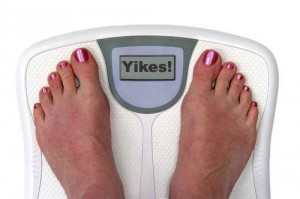A New Look at Measuring Obesity
Apr 5th, 2012
 As of a February 2012 statistics by the Centers for Disease Control and Prevention (CDC) show that 35.7% (or more than one third) of American adults are obese. Obesity is also becoming an epidemic among children and adolescents. Children as young as 2 years old are found to be obese. A third of America’s children are either overweight or obese.
As of a February 2012 statistics by the Centers for Disease Control and Prevention (CDC) show that 35.7% (or more than one third) of American adults are obese. Obesity is also becoming an epidemic among children and adolescents. Children as young as 2 years old are found to be obese. A third of America’s children are either overweight or obese.
A recent study published by PLoS One has found evidence showing that our BMI or body mass index can no longer be considered as a reliable basis for determining whether a person is overweight or still within the normal range. If this is true, Americans who are only considered overweight may actually be considered obese. Thus, increasing the percentage of the country’s obesity percentage.
This study is based on the research by Dr. Eric Braverman, president of the Path Foundation in New York City and Dr. Nirav R. Shah, New York State Commissioner of Health.
CDC defines BMI as “a number calculated from a person’s weight and height.” If a person’s BMI has reached 30, they are considered obese. But according to Braverman and Shah, this number should be reduced to 24 for women and 28 for men.
Relying on BMI can mislead you into thinking that a person is healthy because their BMI falls within the normal threshold. But it doesn’t take into consideration a person’s bone density, muscle mass or fat. A muscled body is heavier than a fatty one. According to Braverman “it’s the percent of body fat, not BMI, that makes you obese”.
Braverman and Shah used a DEXA scan (Dual-energy X-ray absorptiometry) to measure participants’ body fat versus their BMI. A DEXA scan has the capacity to differentiate between bones, fats and muscles.
The unreliability of BMI as the basis for determining obesity is most evident among women. Braverman said “as women age, they tend to lose bone and replace muscle with fat.” About half of the women participants were misdiagnosed to be “fit” using BMI. But through DEXA scan, they were found to be obese.
Braverman and Shah suggest combining BMI with Leptin blood testing to determine obesity. Leptin is a hormone produced by fat cells to manage the storage of fat in the body. According to Dr. Braverman, the ideal Leptin level is under 5. Though this is deemed to give a more accurate result, some doctors have already made their doubts known.
Did you know? Obesity can not only cause major health problems but it also has a staggering affect on health care costs in the U.S. Keep that in mind next time you’re shopping for your healthy NY insurance policy!
Related posts from our blog:
No related posts.
Tags: Measuring obesity | obesity
Posted in: Simon Bukai | Comments Off